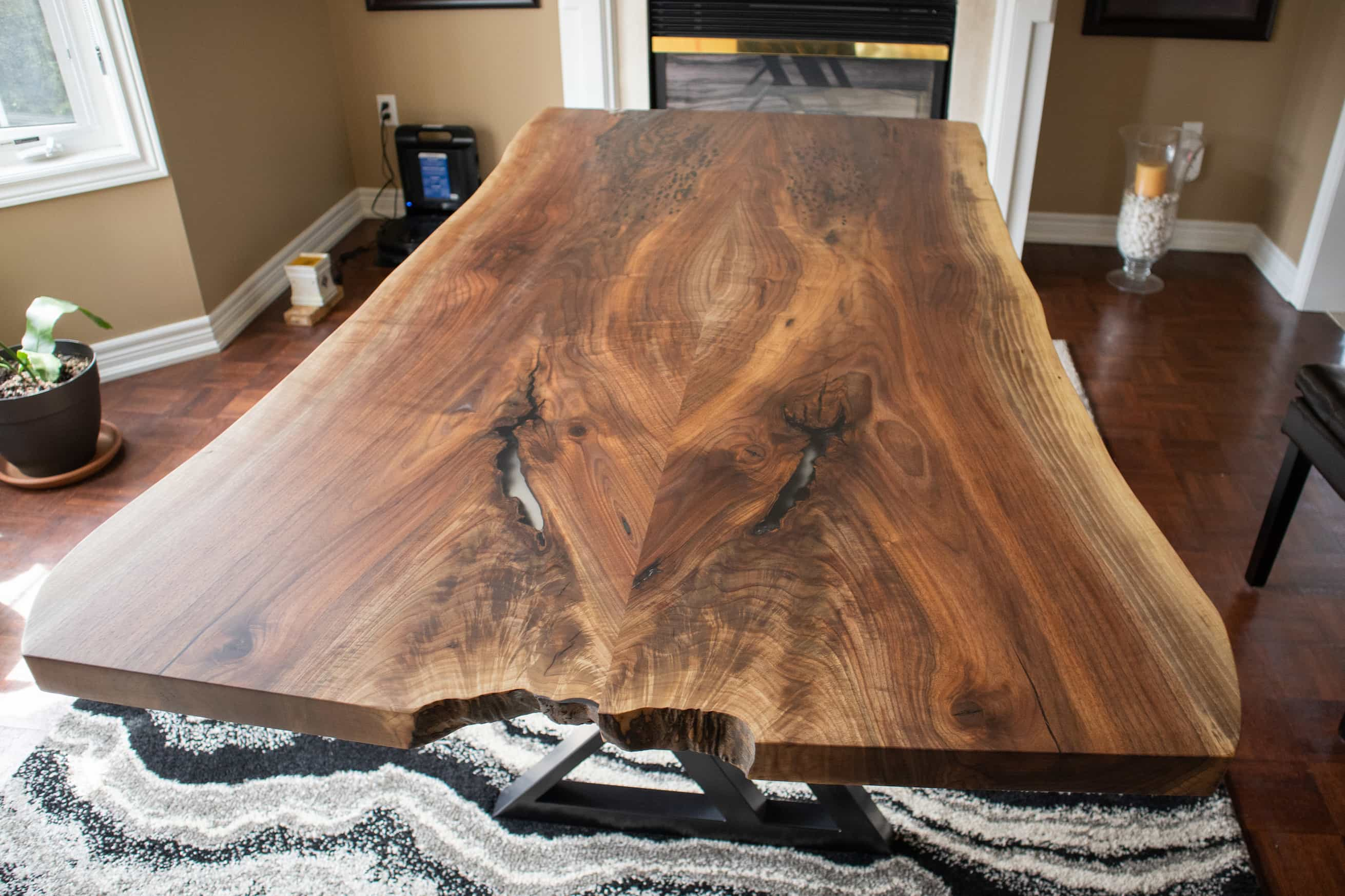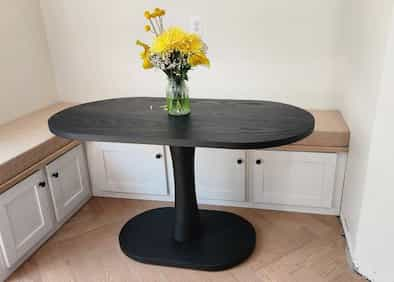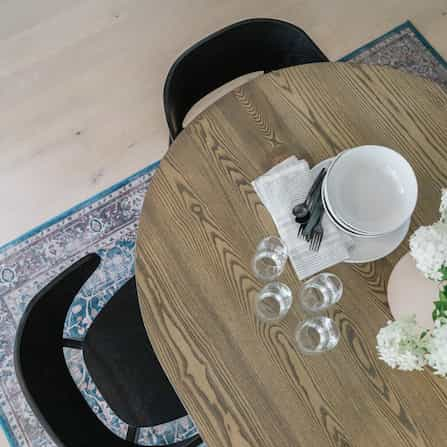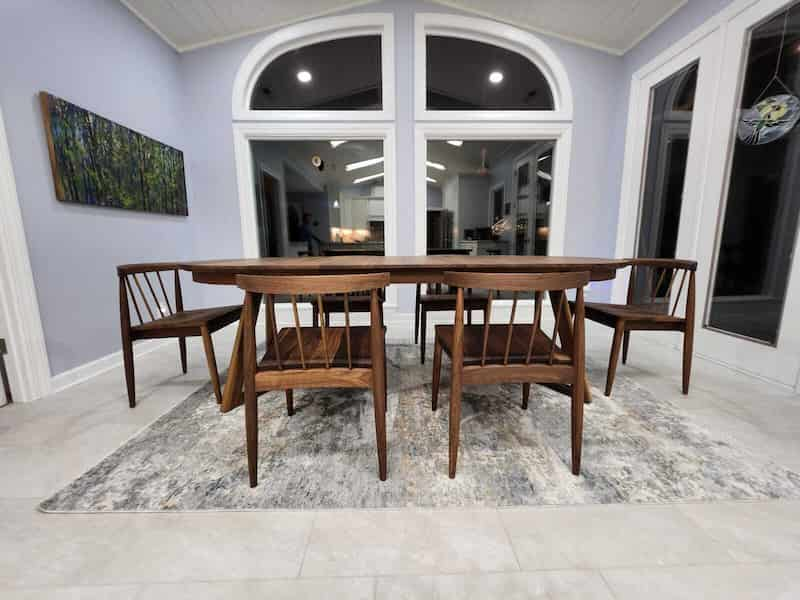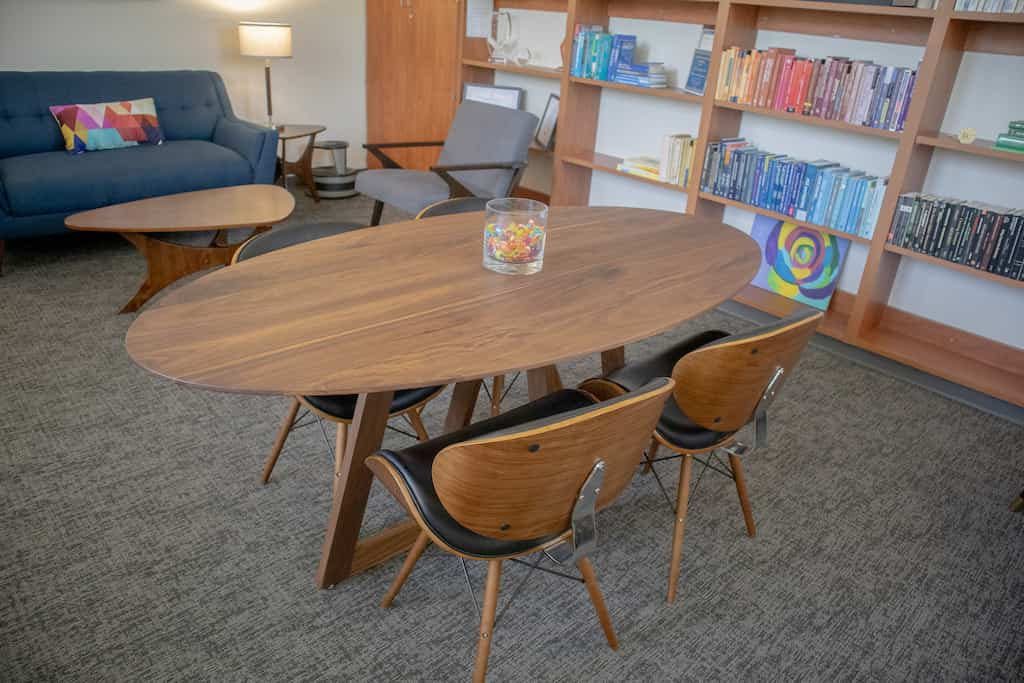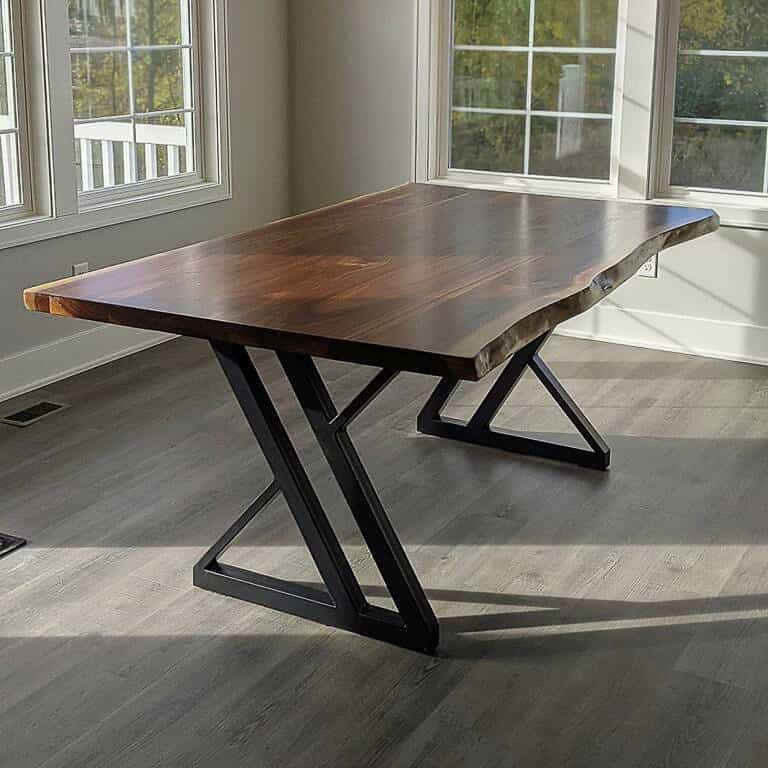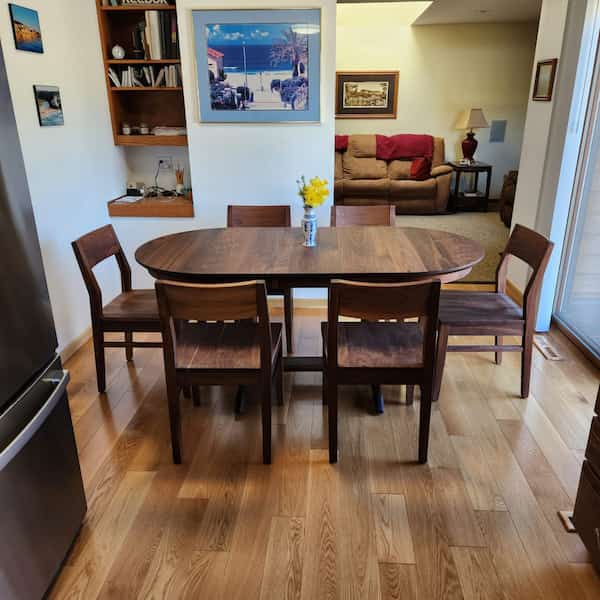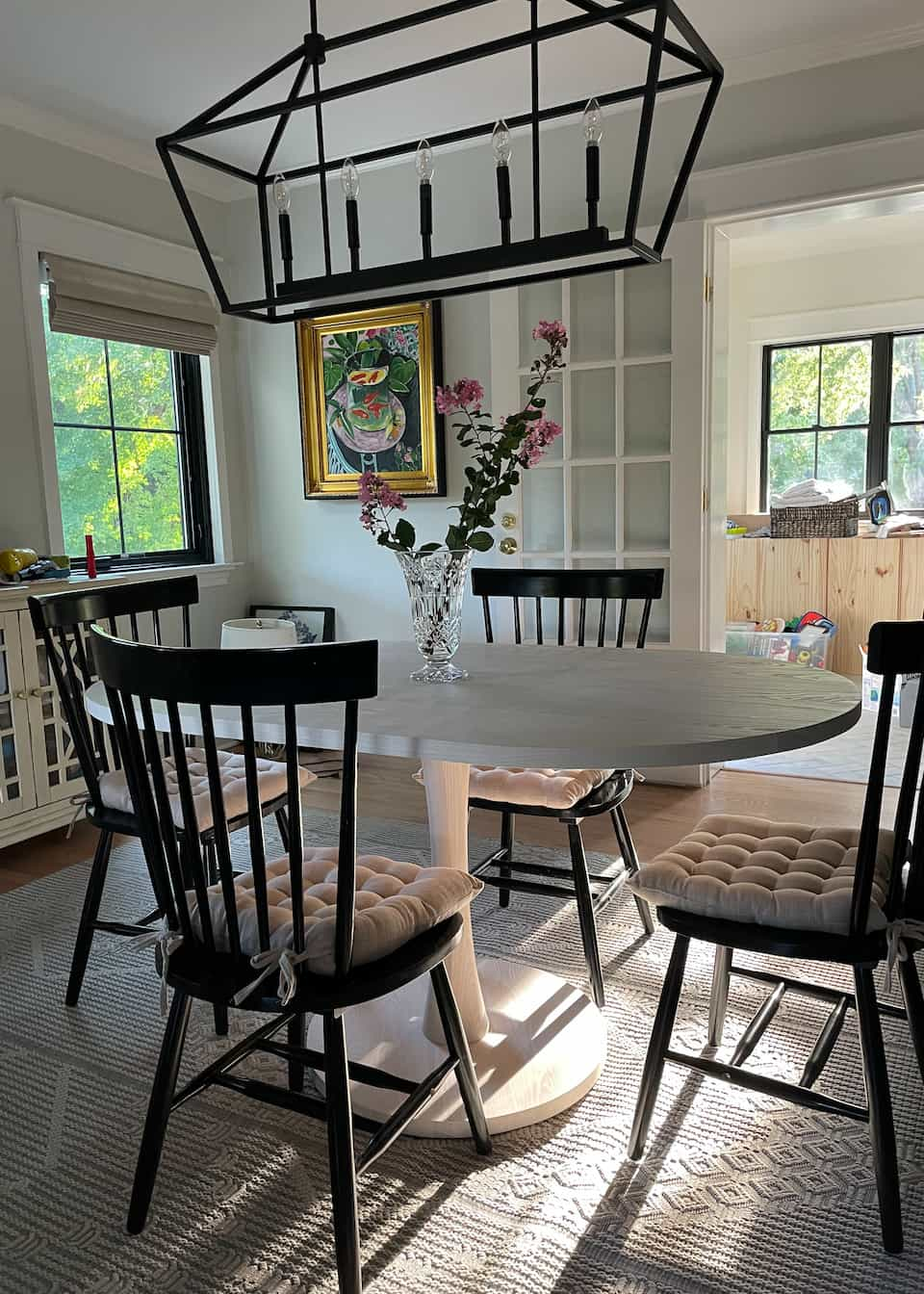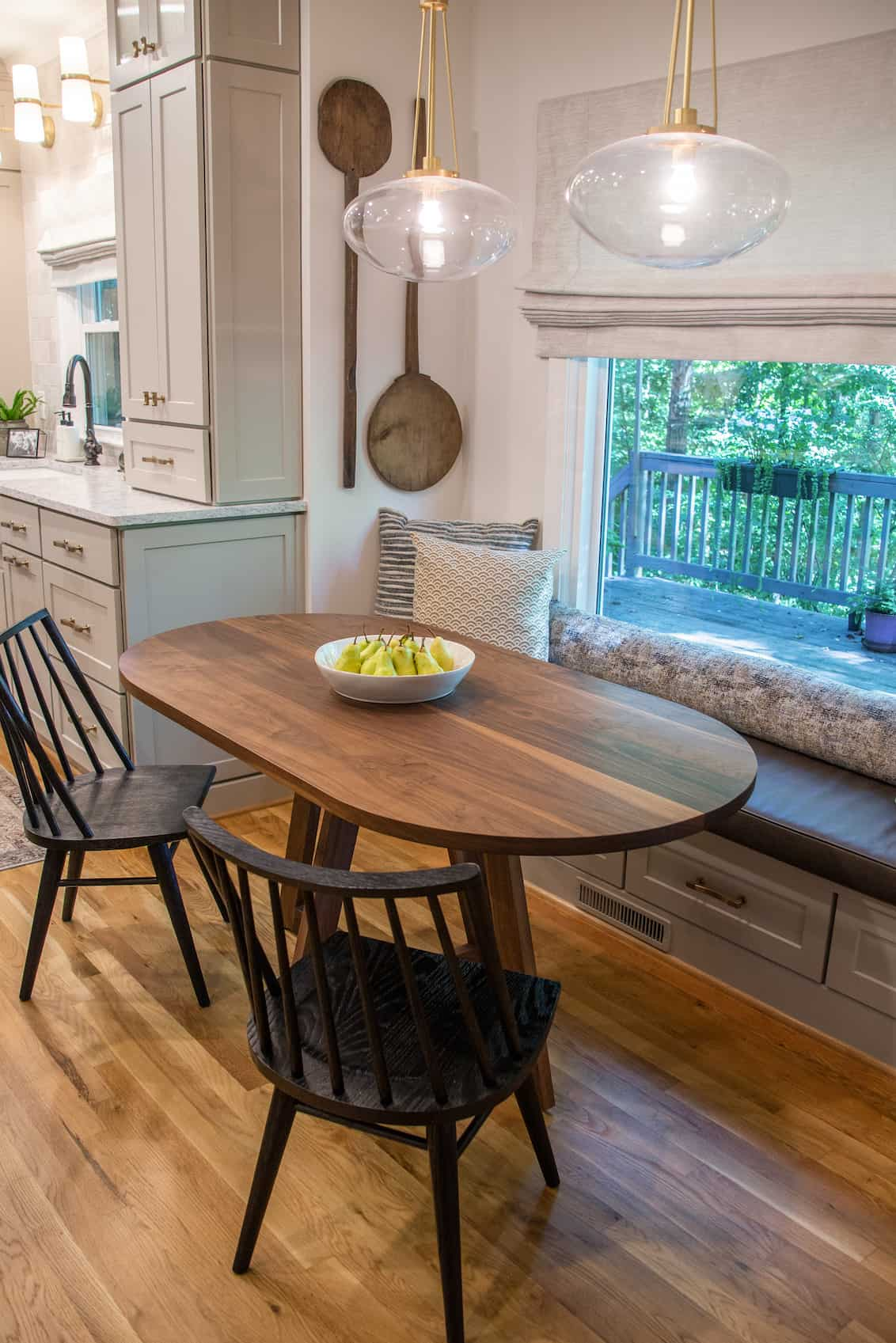Parents aren’t supposed to have a favorite child, but they all do. At Loewen Design Studios we work with 4 kinds of woods, and we all have favorites. My dad’s favorite is Walnut, my mom’s is Rock Maple, and I’m torn between Ash and Oak. I just love the way the grain in the wood comes alive when it’s finished and the two tone look that the wood table ends up having.
So this is what I want to write about, is this two tone look in Ash and Oak. Why does it happen? How does it look? Does it feel different? What’s the difference between this look on Ash and on Oak when it comes to your wood table? I’ll see if I can answer all of this.
First off, how does it look? Well mostly like the pictures.

The grain on all of these wood tables creates dark stripes running the length of the table. These stripes are the grain of the wood, so they are natural, and therefore, not all perfect or consistent. They do tell you a story about the tree though. In fact, these grain lines are the same thing as the rings you can count in a tree trunk to know how old a tree is. From this, you can get at least a bit of information about how old your wood table could be.

So why do they look like this? Ash and oak woods have a grain that works differently than maple or walnut. Ash and oak have a grain that’s much more open than the rest of the board, so it can take much more oil and much more color. This is why the grain lines get darker on these types of wood tables.
But, do these lines always get darker? Not exactly. On black and white dining tables they do some VERY interesting things.

This is a black table and in this picture the grain looks lighter, but in another picture it can look darker. This is true in real life too, the grain ends up reflecting light differently to create the different look, rather than taking more or less of the color. So looking from one angle it might be lighter, from another darker, and from yet another they may almost disappear. I don’t know if describing it as magic is too far, but it’s a bit magical.
So if they reflect light differently, do they feel different too? The answer to that can depend a little bit. Overall, the answer would probably be not really. Unrelated to the color and the light bouncing off the finish, the grain can react differently to humidity and so it can ever so slightly rise to the point that it can be felt where it is. It should be very subtle and will certainly not have an impact on how you use your wood table.

Finally, what's the difference between ash and oak when it comes to your wood table? It’s a subtle difference, but ash wood has a more pronounced grain. Ash looks a little more like someone drew the grain with a crayon, and oak looks a little more like someone used a pencil. Ash has board lines that are very clear, whereas oak’s grain is broken up, with lots of very small little lines coming together to form a larger line through the piece of wood. This is the main difference between the two in relation to your wood table, it’s a subtle visual shift in the grain. The oak has a slightly more refined look, while the ash has a slightly more playful look!
If you have more questions, reach out to us anytime, we’re happy to talk through it!
















